The Milky Way
The Watlings Street and the Vaði Myth
by Peter Krüger
©2013
[Germanic Astronomy]
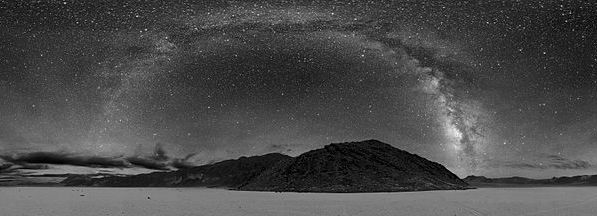
The Milky Way appears under several different names in Germanic sources.
Among others it is called
Irungs Way (vegr) or Irungs Wall (veggr),
but also Watlings street (a full discussion of all sources can be found in
Grimm’s Teutonic Mythology and Rydberg’s Teutonic Mythology).
The Anglo-Saxon designation 'Watlings street' seems to be named after Wade/Wati/Vaði, the father of Wayland the Smith. His name Vaði ‘the wading one’ may refer to a story preserved in Thidrekssaga where he carries his young son Wayland (called Velent in Thidrekssaga) on his shoulders across a sea channel. After crossing the channel they reach a mountain inhabited by two dwarves:
|
‘Nú
tekr Vaði risi son sinn Velent ok ferr heiman ok kemr til
Grænasunds, ok þá er þar ekki skip yfir at flytjast sundit, ok
beið hann þar um hríð. Ok nú tekr hann sveininn ok setr á öxl
sér ok veðr yfir sundit, en þat var níu álna djúpt. Ok ekki er
af þeira ferð at segja, áðr en þeir kæmi til bergsins.’ |
||
The whole
Vaði
myth is clearly located in Denmark. Wati is said to live in
Zealand
(the
Danish island Sjælland),
he crosses the Green Strait (Grønsund, the sea channel between the
Danish islands
Møn and Falster). Later Velent
travels north to Denmark and reaches Jutland, the continental part of
Denmark.
Again, there is ample evidence that the
Vaði
myth contains astronomical information that was later turned into history.
The story of Vaði
crossing the sound is very reminiscent of the tale of Thor
crossing the river
Vimur, ‘the greatest river of all’ in the Geirrödr
myth.
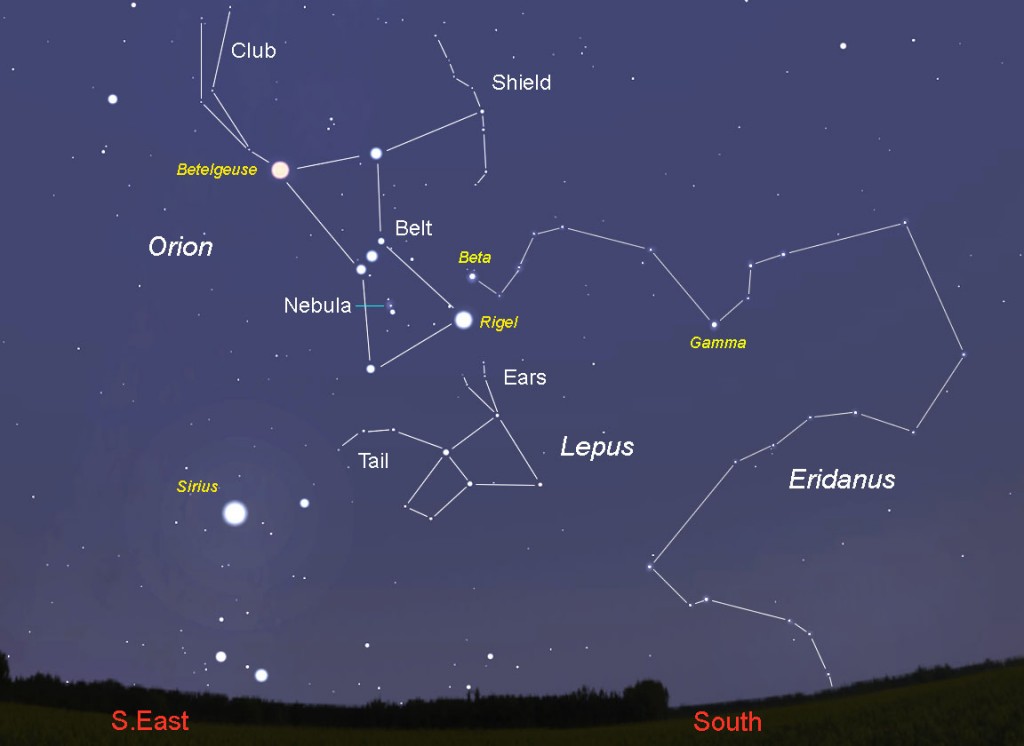
In this myth, I identified Thor with the constellation Orion standing on the constellation Eridanus, the celestial river. Interestingly, we find another story of Thor (here represented by the constellation Taurus) carrying Aurvandil in a basket (the constellation Auriga) over the Elivagar (the Milky Way). I assume that Aurvandil's toe can still be seen as the bright star Capella.
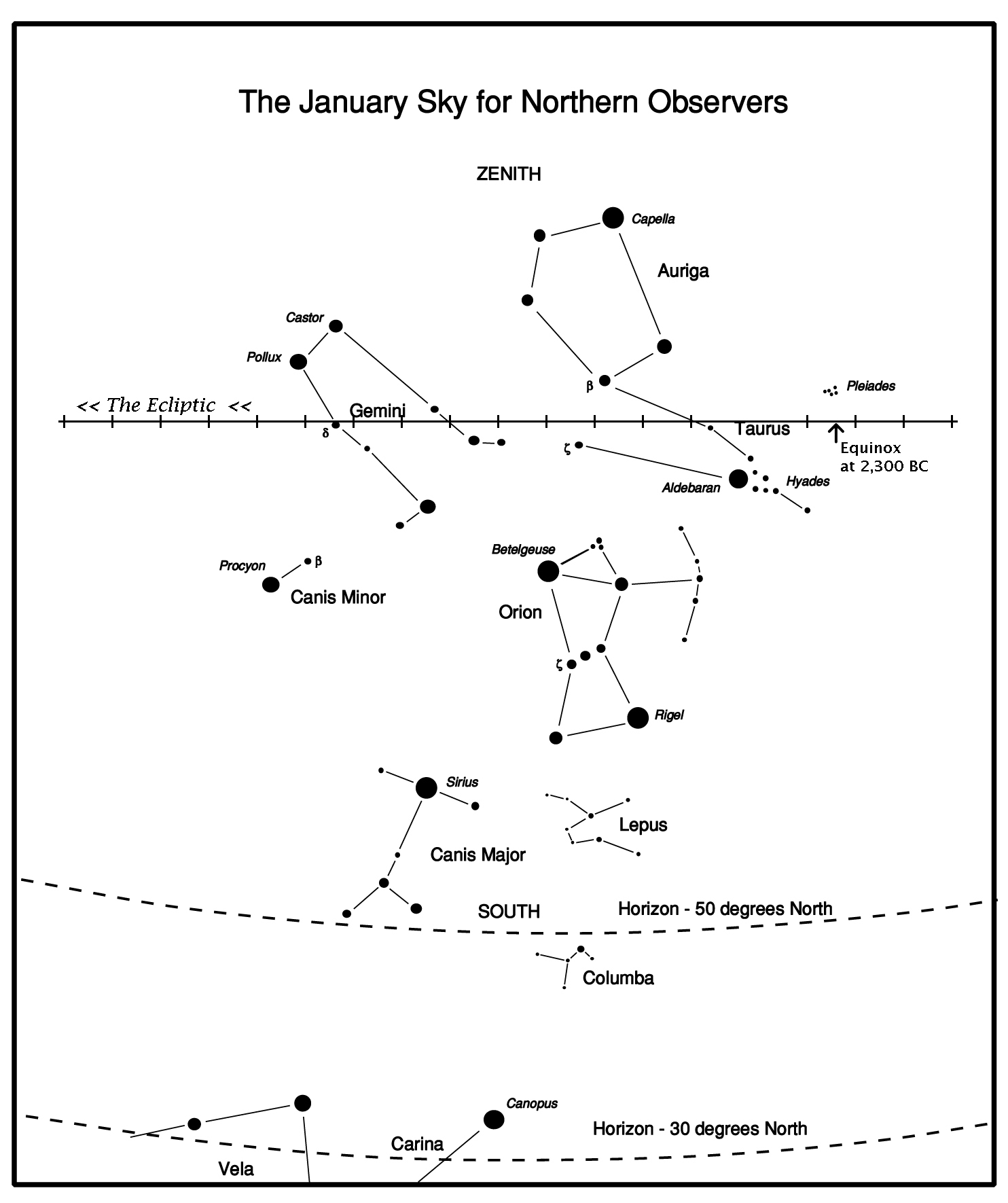
Even the themes seem to be related. I think that in case of the Vaði myth it is more probable that the young Velent is represented by the pi-stars of Orion, stretching from Orion towards the Milky Way.
A further clue to the identification of Vaði with Orion might be that he is always named ‘Vaði risi’, Vaði the giant, in Thidrekssaga. This parallels other names for the constellation Orion, called Gabbara by the Syrians, and Al Jabbar in Arabic, which both mean giant.
If Vaði is indeed Orion crossing the Eridanus than surely the mountain is the circle of the Milky Way building a barrier between the two halves of heaven. Just near Orion is the crossing of the ecliptic with the Milky Way. This crossing is also known as the Silver Gate of heaven.
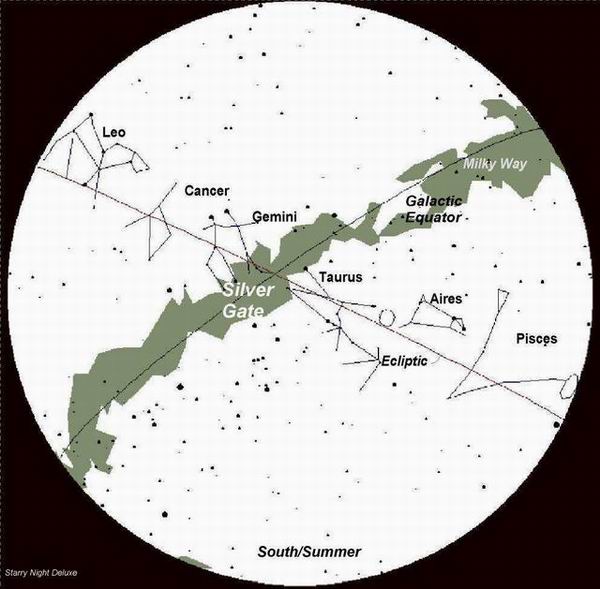
As the story continues, Vaði leaves Velent behind at the home of two dwarves living within this mountain. If we look near Orion for the two dwarves than we come to the inevitable conclusion that they must be represnted by the constellation Gemini, the Twins (!) or more specifically the bright stars Castor and Pollux on the other side of the Milky Way and the Silver Gate. Vaði pays the dwarfs for teaching his son as a smith with a golden coin, perhaps indicating the noticeably bright star Prokyon next to Gemini.
Vaði returns to the mountain after exactly twelve months to pick up his son. This represents a complete cycle of the rising and setting of the constellations. However, Velent stays another twelve months with the dwarves. Upon his second return, Vaði found the door to the mountain closed and he was so tired that he laid down and fell asleep. During his slumber, an earthquake causes a landslide and he is buried under an avalanche of water, wood, stones and earth:
|
‘Í þessu bili keinr landskjálfti mikill, ok leysir ór fjallinu ofan eina skriðu með vatni ok viði, grjóti ok moldu ok mikilli jörðu, ok hleypr yfir risann, ok lætr Vaði svá sitt líf.’ |
How can we explain this obscure passage? Vaði as the constellation Orion rises in the east (at its rising Orion is laying on its side, as if sleeping). This 'sleep' lasts from the rising of Orion until its setting. Upon its setting on the western horizon, Orion lays on its side again and indeed the Milky Way seems to hang over him, as if he were buried below it. Gemini, the two dwarves, are now standing directly above him.
Vaði is buried due to an earthquake. This could be another hint at a celestial scenario as earthquakes appear quite often in northern myths, especially in connection with the rising of Scorpio and the star Antares. The astronomical background for the earthquake might actually be the Great Rift of the Milky Way, a gap within the Milky Way formed by dark dust clouds near Scorpio. It seems to be connected to the myth of Ginnungagap, filled in during the creation of the world but still in danger of reopening again.
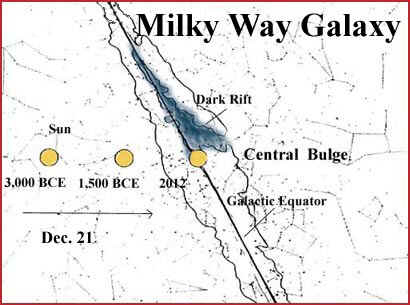
This connection to Scorpio and the Great Rift fits perfectly as the setting of Orion was already linked with the rising of Scorpio in ancient times.
I assume that Velent in this part of the story is represented by the constellation Hercules as is Völund in the Völundarkvida. Hercules rises as Orion and Gemini approach the western horizon. Velent is said to first search for his father and when he cannot find him, he then searches for the sword his father hid for him in the event that he did not come back. It takes him some time to discover the hilt of the sword but then he can take revenge by killing the two dwarves.
How should we interpret this scene? As it took some time for Velent to discover the sword it must rise after the constellation Hercules at the eastern horizon and the Great Rift of the Milky Way but before the setting of the Twins on the western horizon. Interestingly the constellation Scorpio was known in cuneiform tablets as MUL.GIR.TAB, ‘the sword of heaven’. Scorpio seems ‘stuck’ in the Milky Way. Interestingly, it also marks the second gate of the Milky Way known as the Golden Gate of heaven so that Velent can leave after the death of the two dwarfs the mountain taking all their gold and silver with him.
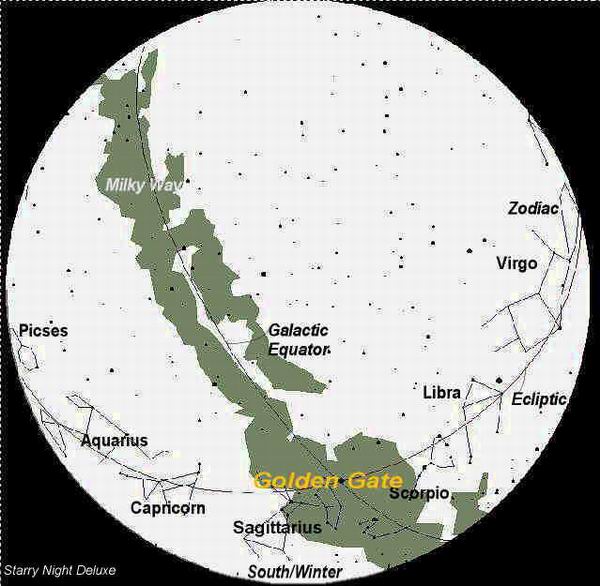
The events of the myth concerning the death of Vaði can be summarized as follows:
The rising of the Great Rift of the Milky Way causes an earthquake.
Orion (Vaði) is buried by the setting Milky Way and himself sets on the western horizon.
Velent, who rises as the constellation Hercules, searches for
the sword of heaven, Scorpio. At this time the Twins (Gemini or Castor and
Pollux, representing the two dwarves) are standing on top of the setting Milky Way and Orion.
After the appearance of Scorpio (the sword of heaven) Gemini also sets
(i.e. the two dwarves are killed by the sword).
I assume that this story regarding the death of Vaði and his close
connection to the Milky Way led to its name "Watlings street" after Vaði.
It seems that subsequent events in the myth, describing
how Velent packs the treasures of the dwarves on a horse and reaches a
river where he builds himself a boat out of the trunk of a tree, also have an
astronomical background which I shall analyze in another post.